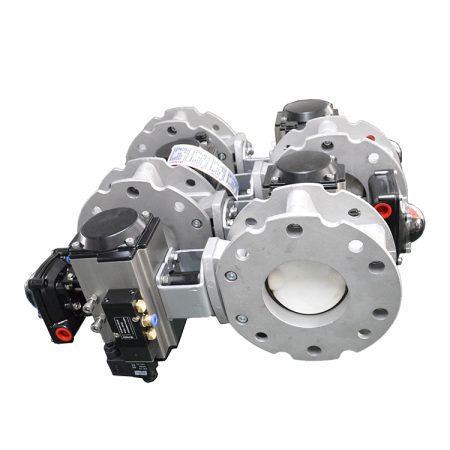
Selecting the right powder valves? depends on your specific requirements. The type of material and the process are important factors. A butterfly valve is ideal for free-flowing powders, offering quick shutoff and easy operation. For handling tough or heavy powders, a pneumatic valve like a knife gate valve is more suitable, as it helps maintain separation and safety. Rotary valves are effective for dosing and conveying powders with air. When precise control is needed, an electric valve or a pneumatic control valve is recommended, as these options ensure consistent performance. Engineers should consider flow rate, particle size, and system design when choosing the appropriate powder valves?.
Key Takeaways
- Pick powder valves by looking at powder type, flow needs, and system design for the best outcome. Butterfly valves are good for powders that flow easily and need low pressure. They shut off fast and are simple to clean. Rotary valves give a steady and exact powder flow. They keep pressure well and are great for dosing and moving powder with air. Knife gate valves can handle rough, sticky, or heavy powders. They use a sharp blade and work best for hard jobs at low pressure. The material, seal type, and valve size should fit the powder to stop leaks, damage, and clogs. Food and medicine factories need clean valves with smooth surfaces. These valves must be easy to clean to stop germs. Checking valves often and asking experts helps stop problems and keeps powder systems safe and working well. Using more than one valve type in a system can help move powder better by matching each valve to its job.
Valve Selection
Application Guide
To pick the right powder valve, you need to know your job. Butterfly valves are good for powders that flow easily. They are best when you want to stop flow fast. These valves are simple to use and do not leak much. Rotary valves are great for moving and measuring powders. They can drop or blow powders into a system. This makes them good for moving powders with air or giving exact amounts. Knife gate valves are strong and work with rough or heavy powders. Their shape lets them cut through hard stuff and block flow well.
How your system is built matters too. Butterfly valves fit in small spaces and work at low pressure. Rotary valves help control flow when you need the same amount each time. Knife gate valves can handle bigger pieces and higher pressure. This makes them good for tough jobs.
Key Criteria
You need to think about many things to pick the best valve:
- What the valve does: drop-through, convey-through, airlock, feeder, or airlock feeder.
- What the valve is made of: match it to the powder and where it will be used. Stainless steel is good for clean or harsh places. Cast iron or carbon steel is fine for easier jobs.
- How easy it is to clean: very important for food, drinks, and medicine.
- Explosion safety: needed if the powder can make dust clouds or catch fire.
- Valve size: depends on how much powder and the flange size.
- Powder type: think about size, roughness, and how it flows.
- Pressure and temperature: pick valves that can handle the heat and pressure.
- Surface finish: clean jobs may need a shiny finish to stop germs and make cleaning easy.
Tip: Always pick a valve that matches the powder and the job for best results.
Expert Consultation
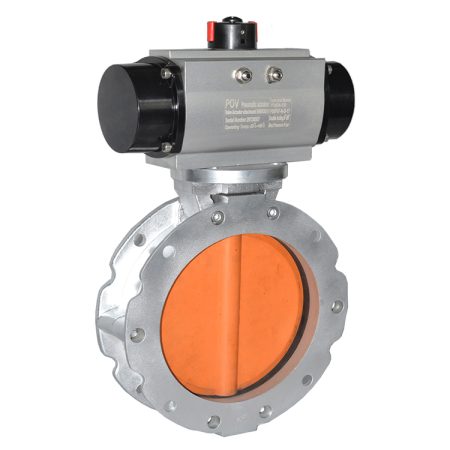
If your powder system is tricky, ask an expert. People who know a lot suggest a step-by-step plan:
- Find out what industry and powders you use.
- Check if the powder is rough, eats metal, or needs to stay clean.
- Think about weight if the equipment moves or spins.
- Decide if the valve is for letting powder in, out, or in the middle.
- Write down the pressure and temperature you need.
- Pick port sizes based on how much powder you move.
- Choose valve materials that last, like stainless steel or Hastelloy for tough jobs.
- Pick a smooth finish for sticky or clean powders.
- For special jobs, talk to powder experts and test in a lab to get the right size and performance.
The valve you pick affects how safe, strong, and fast your system works. Talking to skilled engineers or powder experts helps you avoid mistakes and get the best valve for your needs.
Powder Valves Overview
Importance in Bulk Handling
Powder valves? are very important in moving dry powders. They help move powders without letting dust escape. This keeps the air clean and safe for workers. Workers use powder valves? to stop germs or dirt from getting in. These valves also help people work faster and better. Many powder valves? are small and can fit in tight places. Some valves and filters work by themselves to keep things clean.
- Move powders without making dust.
- Help people work faster and safer.
- Keep things clean and working right.
- Stop germs or dirt from getting in.
- Use special valves and filters to keep things safe.
| Role/Benefit | Explanation |
|---|---|
| Fixing powder flow problems | Cone valves stop powders from sticking or separating. |
| Controlled discharge | Let powders leave the system in the right amount. |
| Dust containment | Keep dust inside so it does not get out. |
| Accurate dosing | Give the right amount of powder each time. |
| Keeping blends mixed | Help powders mix well and not separate. |
| Protecting product and equipment | Stop damage and keep powders good. |
| Making work easier and faster | Less cleaning and fixing is needed. |
Material Considerations
What the powder is like changes which valve you need. The size, roughness, and how it moves all matter. Big or odd-shaped pieces can block some valves. Rough powders can wear out the valve fast. Sticky powders can make clogs or leaks. The valve must match the powder to last longer. Valves need to close tight so powder does not leak. How easy the powder moves changes how the valve works. Some powders move easily, but others need special valves to keep going.
The size and shape of powder pieces change how they move. Powders that do not move well need special valves. Rough powders need strong metal valves to last. How powders move changes how the valve is made. This helps stop leaks or clogs. All these things help pick the right valve, the right design, and how it works.
System Integration
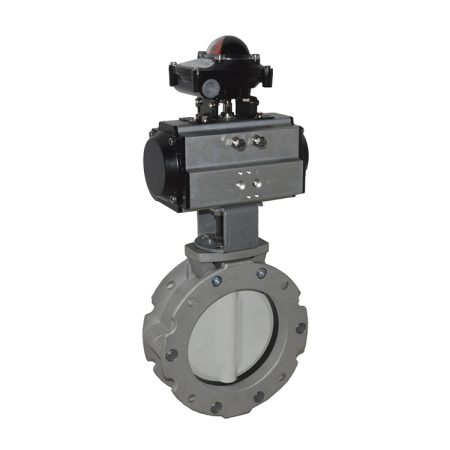
Putting powder valves? into big systems can be hard. Workers must stop too much powder from coming out at once. Too much powder can spill and break things. Moving powder can make a lot of dust. Using clamps or dust catchers helps keep dust down. Some powders stick and are hard to clean, so easy-to-clean valves are needed. Good bag and spout sizes help powders move and stop dust.
Regular powder valves? may not work for every powder. If the valve does not fit, it can block or break the system. This means more repairs and more time not working. Using the wrong parts makes things slow and hard to fix. Machines must be clean, especially for food or medicine. Some systems use air or special gas to keep things safe. Easy-to-use and simple designs help workers stay safe and clean up faster.
Butterfly Valves
Design
Construction
A butterfly valve has a round disc on a shaft inside. The disc turns to open or close the path for powder. Rotary butterfly valves have discs with pockets. These pockets let a set amount of powder fall through when the disc turns. Most butterfly valves for powders are small, less than 300 mm wide. Makers use stainless steel or other strong metals for the body and disc. Pneumatic actuators turn the disc back and forth up to 180 degrees. The valve closes tightly to stop leaks, even with fine powders.
- The disc can have pockets for measuring powder.
- The valve body is small and simple to put in.
- Pneumatic parts make the valve move fast and well.
- Seals and coatings keep the valve safe from damage.
Operation
People use butterfly valves to start or stop powder flow fast. The disc turns to line up with the flow so powder can pass. When closed, the disc blocks the way and seals tight. Rotary butterfly valves use gravity to drop powder as the disc pockets turn. Pneumatic controls help the valve work quickly and the same every time. The valve is easy to fix because it does not have many moving parts.
Note: Butterfly valves work best with powders that flow easily and do not stick.
Applications
Suitable Uses
Butterfly valves are used in many places that handle powders. They close and seal bins, silos, and tanks. People use them to control powder flow in systems that use air. Common jobs are storing powder, feeding reactors, and adding things like cocoa powder in food plants. Food, chemical, and medicine companies use butterfly valves for clean and safe powder work. The design makes cleaning easy, so they are good for places that change products often.
Limitations
Butterfly valves are not good for sticky powders or ones that clump. Big or odd-shaped pieces can block the disc or stop a tight seal. High pressure or rough powders may need stronger valves. Do not use butterfly valves if you need very exact powder amounts.
Pros and Cons
| Pros | Cons |
|---|---|
| Tight sealing stops leaks | Not good for sticky powders |
| Strong, rust-proof materials | Can clog with big particles |
| Works with powders and liquids | Not very exact for measuring |
| Cheap and lasts a long time | Not for high-pressure jobs |
| Simple to clean and fix | |
| Good for clean work | |
| Saves energy | |
| Cuts down on waste and pollution |
- Butterfly valves give good flow control, safe dosing, and help keep workers safe. Their simple shape saves energy and helps the environment. People spend less on repairs and the valves last longer.
Rotary Valves

Design
Rotary valves are important in powder systems. They help control how much powder moves. They also help keep the right pressure. Each rotary valve has a case with places for powder to go in and out. Inside, there is a rotor with many pockets. There are end plates and a drive to turn the rotor. Makers use strong metals like cast iron, stainless steel, or Hardox. Some valves have special coatings to stop wear or keep things clean.
Rotary valves come in different types for different powders:
- Drop-through valves: These have up-and-down ports. They work best with powders that flow easily and do not stick. The powder falls through the rotor pockets as it turns.
- Blow-through valves: These fit right into air pipes. They move sticky powders by blowing air through the rotor pockets. This stops powder from building up inside.
Other parts help the valve work better. Outboard bearing plates help with high heat. Air purge fittings stop powder from getting in the wrong places. There are many rotor types. Some rotors have open or closed ends. Some have shallow pockets for sticky powders. Others have strong pockets for rough powders. Seals made of rubber, neoprene, nitrile, polyurethane, or metal keep air and dust from leaking.
Note: You can change the rotor speed and fill level. This helps you control how much powder moves and works for different powders.
Drop-Through
Drop-through rotary valves use gravity to move powder down. The rotor pockets fill up under the inlet. They empty when they turn past the outlet. This simple design is easy to fix. It gives a steady flow of powder. Drop-through valves are good for powders that do not stick.
Blow-Through
Blow-through rotary valves connect to air pipes. Air moves through the valve and carries powder out of the rotor pockets. This keeps sticky powders from sticking inside. Blow-through valves help keep the right pressure. They also help stop clogs.
Applications
Rotary valves are used in many jobs. They are found in cement, food, chemicals, mining, plastics, farming, and power plants. Their main uses are:
Pneumatic Conveying
Rotary valves act as airlocks in powder moving systems. They let powder enter air streams but keep the pressure right. This lets workers feed powder safely from silos or bags into pipes. Rotary valves also help empty dust collectors. They keep a vacuum seal and let the system run all the time.
Metering
Rotary valves give exact amounts of powder to machines. They send powder in steady bursts. This stops machines from getting too much powder or breaking. Factories use rotary valves to feed mills, sorters, and reactors. Food plants use them to move and measure flour, grains, sugar, and spices. Chemical and medicine plants use them to handle fine powders safely.
Pros and Cons
| Pros | Cons |
|---|---|
| Good control of powder flow | Air leaks can make them less efficient |
| Keeps pressure difference (airlock) | Wear means more fixing is needed |
| Works with many kinds of powders | Not a perfect seal—some powder may leak |
| Can be used in many systems | Complex parts can cost more |
| Simple design is easy to fix | How well it works depends on speed and air |
| Many rotor and seal choices | Light powders may not move as well |
Rotary valves are useful and dependable for moving powders. They can measure, feed, and keep pressure in many systems. But workers must watch for leaks and worn parts to keep things working well.
Knife Gate Valves
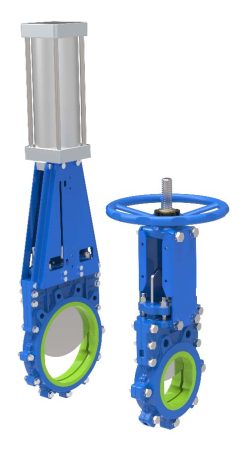
Design
Gate Mechanism
Knife gate valves have a sharp blade that moves up and down. This blade cuts through thick or sticky powders. It helps stop clogs and keeps the valve working well. The valve body is shaped like a hopper. This shape helps powders and granules move out easily. The seat sits on the side where powder comes in. This keeps it safe from the flow of solids. The design helps stop rust and keeps the gate from getting stuck. Knife gate valves are small and light. This makes them easy to put in and fix. Many are made from strong steel that does not wear out fast.
- The sharp blade goes through heavy or sticky powders.
- The hopper shape helps powders leave silos smoothly.
- The seat is placed to stop wear and rust.
- Small size makes them easy to install and fix.
- Strong materials help the valve last longer.
Customization
Engineers can change knife gate valves for special jobs. Some have soft sealing strips inside grooves in the valve. These strips press down when the gate closes. This stops powder from building up and helps seal tight. Some valves use hollow rubber strips for more strength. Others have two seals: a rubber O-ring and a hard metal seat. The O-ring seals well when pressure is low. The metal seat seals tight when pressure is high. This mix helps the seal last longer and stops leaks with powder or slurry.
- Soft sealing strips help seal and stop buildup.
- Hollow rubber strips make the valve stronger.
- Two seals keep things tight at different pressures.
Applications
Abrasive Powders
Knife gate valves work well with rough powders. Mining, chemical, and power plants use them for bagging dry solids and moving powders. They also help with hopper pumps and mixer pumps. The bull nose knife gate is extra strong for cutting tough stuff. Some valves have a urethane lining to stop wear. This makes them last longer and need less fixing in hard jobs.
Isolation
Workers use knife gate valves to block powder flow. These valves can close even when powder is not moving. This makes them good for open hoppers or pipes. Slide gate valves and orifice slide gates do the same job. The bull nose knife gate shuts off flow well, even if the system has low pressure. For best results, workers open the valve all the way during use. This stops damage from shaking and wearing out.
Tip: Always open knife gate valves all the way to stop wear and keep them working well.
Pros and Cons
| Benefits of Knife Gate Valves | Drawbacks of Knife Gate Valves |
|---|---|
| Simple and light | Only for low-pressure jobs |
| Easy to put in and use | Not good for very clean jobs |
| Sharp blade cuts solids | Seal can wear out and stop work |
| Good seal with metal or soft gaskets | Can clog with slurries with solids |
| Low pressure drop helps flow | Can be loud and shake when used |
Knife gate valves are good for moving lots of powder, especially rough or scratchy ones. Their simple build and sharp blade help with hard jobs. But they are not good for high pressure or very clean places. Checking and fixing them often helps stop seal problems and keeps them working well.
Comparison Table
Performance
Picking the right powder valves? for moving lots of powder depends on how well they work. Engineers look at things like how much the valve blocks flow, how well it seals, how tough it is, how often it needs fixing, and how hard it is to put in. The table below shows how butterfly, rotary, and knife gate valves do with these things.
| Performance Metric | Butterfly Valve | Rotary Valve | Knife Gate Valve |
|---|---|---|---|
| Flow Restriction | The disc blocks some powder and slows it down | The rotor lets powder move at a steady speed | The blade can press powder but does not block much |
| Seal Integrity & Wear | Soft seals wear out and may not seal dry powders | Seals wear out with rough powders | Soft seals can wear down and leak |
| Abrasion Resistance | Not strong; seats wear out fast | Medium; depends on rotor and coating | Not strong; packing can wear out from rough stuff |
| Maintenance & Downtime | Heavy and must be taken out to fix | Medium; some parts can be fixed in place | Heavy and must be taken out to fix |
| Valve Weight & Installation | Heavy and hard to put in | Medium weight and easier to put in | Heavy and hard to put in |
| Sealing Effectiveness | Not good for dry powders | Works well for most powders, but not perfect | Powder can get into seals and stop full closing |
Tip: Check and fix valves often to help them last longer and stop problems.
Suitability
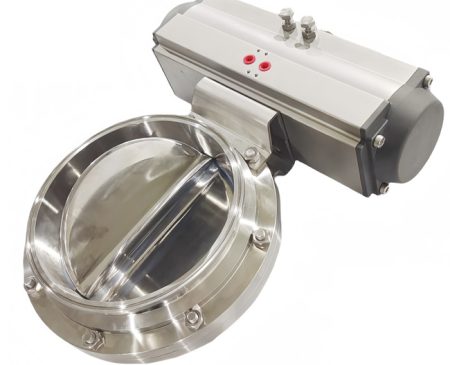
Each valve works best with certain powders and jobs. The table below shows which powders and jobs fit each valve, and what is good or bad about them.
| Valve Type | Suitability Based on Powder Type and Process Requirements | Advantages and Limitations |
|---|---|---|
| Butterfly Valve | Best for chemicals or powders that are not rough; not good for slurries or rough powders | Small, light, and fast to use; not good for high pressure; can get blocked |
| Rotary Valve | Good for controlling flow; works with many powders | Good for control; not much detail on powder types; can leak with very fine powders |
| Knife Gate Valve | Works with rough powders, stringy stuff, slurries, and thick liquids | Good for turning flow on or off; slow to use; seat can wear out; easy to fix |
People who work with lots of powder often pick knife gate valves for rough or stringy powders. Rotary valves are good for measuring and controlling powder. Butterfly valves are best for clean powders that flow easily.
Quick Reference
Here is a quick list to help you pick powder valves?:
- Butterfly valve: Use for clean powders that flow easily in chemical or food jobs.
- Rotary valve: Pick for measuring, airlock, and control in systems that use air to move powder.
- Knife gate valve: Choose for rough, stringy, or sticky powders in mining, chemical, or big powder jobs.
Note: Always pick the valve that matches the powder and job for the best results.
Choosing Powder Valves
Free-Flowing Powders
Picking a powder valve for free-flowing powders takes careful planning. You need to think about how your system is built and what the powder is like. Engineers often pick between drop-through and blow-through rotary valves. Drop-through valves let powder fall down by gravity. This works in many systems, but sometimes you need extra parts to move powder into the pipes. Blow-through valves use air to push powder right into the system. This helps powder move better and keeps things safer, especially if the powder can catch fire.
Many things help you choose the best valve for free-flowing powders:
- How heavy the powder is changes the valve size and speed.
- The way your system is set up, like bends or lifts, changes how powder moves and how the valve works.
- How fast you need to move powder and if you run in batches or all the time helps pick the right valve.
- Powder traits like size, how it flows, and if it can burn change the valve design and what it’s made of.
- How raw materials go into the system affects dust and how the valve fits.
- Machines before the valve and how they work change how steady the powder feed is and what the valve needs to do.
- How much space you have can limit the valve size and type.
- If you run in batches or all the time changes how the valve works and how you control it.
Tip: Always pick a valve that matches the powder and your system for safe and good results.
Metering Needs
Getting the right amount of powder is very important in many jobs. Rotary valves are great because they give steady and exact powder flow. Regular rotary valves give a set amount and keep the pressure right, so they work well in most factories. Sanitary rotary valves are easy to clean and help keep things safe for food and medicine. Scraper rotary valves stop clogs and use air to keep powder from sticking, so powder moves well even if it’s fine or sticky.
The table below shows main rotary valve types for metering:
| Rotary Valve Type | Key Features for Metering | Benefits for Metering Applications |
|---|---|---|
| Standard Rotary Valve | Pressure seal, fixed quantity supply | Consistent powder flow control |
| Sanitary Rotary Valve | Easy cleaning, supports hygiene standards | Precise metering in food and pharma |
| Scraper Type Rotary Valve | Prevents blockages, air blow-through | Smooth flow for fine or sticky powders |
| Blow Through Type | Maintains pressure, fits pneumatic systems | Accurate powder transfer into conveying lines |
| High Temp/High Pressure Type | Water-cooled, heat insulated | Reliable metering under extreme conditions |
Cone valves also help control and measure powder well. Their shape stops problems like powder sticking together or mixing wrong. Many factories use cone valves to make sure each batch gets the right amount. This cuts waste and makes products better.
Abrasive Materials
Moving rough powders needs strong valves that last a long time. Metal seats are best for very rough powders because they last longer and can take more heat. These seats keep dust in, but Teflon seats seal better and wear out faster with rough powders. What the valve is made of is very important. Cast iron, carbon steel, stainless steel, Hastelloy, and titanium are used, depending on how rough the powder is.
How the valve is shaped matters too. Round or dome shapes stop powder from getting stuck and hurting the seat. Some strong valves use many metals and have choices for metal, Teflon, or inflatable seats. Heavy-duty valves, like the T Valve, are made for slurries, rough powders, and heavy stuff.
- Pressure hold systems help start and stop faster, which is good if you change things a lot.
- Metering parts are different. Piston sliding designs give steady flow, but plate sliding holes can make powder move too fast.
- Some valves use special wear-proof parts to last longer with fine rough powders or recycled bits.
- Pressure release systems are simple and easy to fix, which helps in far-away places or where fixing things is hard.
Note: Pneumatic actuation is often picked for rough powders because it is safe, fast, and works well. Fail-safe parts give extra safety for workers and machines.
Food and Hygiene

Food and medicine factories need very clean powder systems. Picking the right valve helps stop germs and keeps products safe. Engineers must use valves that follow strict rules, like those from EHEDG or the USDA.
Sanitary powder valves have smooth designs with no gaps. This stops powder and water from getting stuck and growing germs. Many new sanitary valves can be cleaned dry or wet. Some use Clean-In-Place (CIP), so workers do not take them apart to clean. CIP saves time and lowers the chance of germs. Companies like T?pfer GmbH say these valves dry well after cleaning and keep things clean.
Valve material and finish are important too. Stainless steel, like 304 or 316, is used for parts that touch powder. The surface must be very smooth, under 0.8 Ra, so powder does not stick and cleaning is easy. Sealed covers, protected bearings, and O-rings or gaskets help block dirt and germs from getting in.
The table below shows what is needed for clean powder valves in food and medicine jobs:
| Hygiene Level | Material Requirements | Surface Finish Requirements | Design Features | Cleaning Methods | Certification/Validation |
|---|---|---|---|---|---|
| Minimum Hygiene | Stainless steel (304 or 316) for product contact parts | ~3.2 Ra (surface roughness) | Inlet/outlet can be as cast; easy detachable rotor for dry cleaning | Dry cleaning: remove rotor, vacuum, wipe, dry | N/A |
| Mid-Level Hygiene | Stainless steel (304 or 316), FDA-approved sealants | 0.8 Ra (180 grit), free of pinholes and crevices | Fixed-vane rotor with radius machined between vanes; chamfered vanes; no sharp corners (radius ≥0.8 mm); sealed crevices; protected bearings; O-ring or gasket on drive-side end cover | Dry cleaning (COP): remove rotor and end cover, vacuum; Wet cleaning (COP or CIP): multi-step rinse with warm water, caustic, acid, disinfectant, drying | N/A |
| High-Level Hygiene | Same as mid-level plus robust sealing and materials | Same as mid-level | Design to prevent contamination during cleaning; sealed end covers; protected bearings | Intensive wet cleaning with acidic, alkaline, or caustic solutions; manual scrubbing; cleaning frequency depends on product/process | Certification by USDA or EHEDG required |
| Highest-Level Hygiene | Stainless steel with CIP-capable seals and direct drive | Same as high-level | Fully sealed end covers with O-rings/gaskets; shaft seals for CIP; no disassembly needed for cleaning | Automated CIP cleaning without disassembly; validated cleaning process; no operator involvement | Third-party certification (USDA, EHEDG) required |
Tip: Valves for food and medicine should be easy to clean and have hygiene certificates.
Picking the right powder valve for food and hygiene keeps products good, makes cleaning easier, and stops germs. This keeps people safe and helps the company’s good name.
Industry System Applications
Food Processing
Hygienic Requirements
Food factories need very clean systems to keep food safe. Engineers pick powder valves that are easy to clean and stop germs. Most places use sanitary butterfly valves, rotary valves, tablet valves, and vibratory feeders. These valves have smooth surfaces and simple shapes. This makes them easy to wash and put together. Gaskets must follow FDA rules and stand up to powders and cleaning chemicals. Common gasket materials are silicone, Viton?, EPDM, and PTFE-covered silicone. Valve bodies often use clamp-together designs. Workers can take them apart quickly to clean and check the system.
- Sanitary design stops germs and keeps powders clean.
- Clamp-together valves make cleaning and fixing fast.
- FDA-approved gaskets are safe for food contact.
Valves can use pneumatic actuators or manual handles. Pneumatic actuators work well and help avoid mistakes. Food factories often use these for automatic systems.
Valve Selection for Powders and Granules
The right valve depends on the powder or granule type. Rotary valves are good for steady dosing and keep products mixed. Tablet valves use silicone-coated vanes. They handle fragile products without breaking them. Vibratory feeders help with tiny doses or when space is small. Each valve type works with different flow rates and powder types. Engineers match valve material to powder to stop wear and make valves last longer.
Tip: Always pick valves that fit the powder’s flow and hygiene needs.
Pharmaceutical Manufacturing
Contamination Control
Medicine factories need the best contamination control. Valves must seal tight and be easy to clean. Sanitary diaphragm valves and aseptic powder valves are used a lot. These valves use special materials that do not leak bad stuff. Hermetic seals and leak-free diaphragms keep powders clean and stop mixing. Rapid transfer ports help keep the system closed when moving powder.
Precision and Dosing
Getting the right amount is very important in medicine making. Metering pumps and rotary valves give exact doses of ingredients. This makes sure every batch is high quality. The system must move powders gently to protect them. Steady valve performance helps meet rules and pass checks. Engineers pick materials that keep products safe and stand up to cleaning.
- Accurate dosing keeps products safe and works well.
- Gentle handling protects soft medicine powders.
- Sealed valves help keep things clean and meet rules.
Chemical Industry
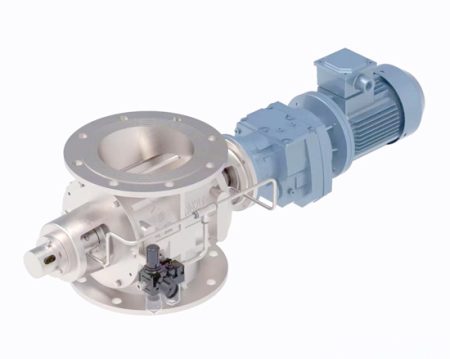
Handling Corrosive and Hazardous Powders
Chemical plants work with dangerous or rough powders. Keeping everything contained protects people and the planet. Engineers pick valves that do not leak and can handle tough jobs. Split butterfly valves, pinch valves with rubber sleeves, and diaphragm valves with PTFE membranes are common. Knife gate valves work with rough or thick materials. Picking the right valve material is very important. Strong choices like Hastelloy, Inconel, stainless steel, or PTFE linings help valves last and keep things safe.
| Consideration Category | Details / Examples |
|---|---|
| Pressure Requirements | Highest pressure the valve must handle. |
| Temperature Tolerance | Temperature range the valve must survive. |
| Media Characteristics | Type of powder: rough, corrosive, thick, toxic, or dangerous. |
| Flow Control Needs | If you need to slow, stop, or control flow. |
| Material Considerations | Use strong materials like Hastelloy, Inconel, stainless steel, or PTFE linings. |
| Valve Types Suitable | Butterfly valves with PTFE/rubber, pinch valves, diaphragm valves, knife gate valves, slide gate valves. |
| Safety and Containment | Keeping powder in to protect people and stop mixing, especially for toxic powders. |
| Installation and Maintenance | Good setup, alignment, and regular checks help valves work well and stay safe. |
System Integration Challenges
Putting powder valves into chemical systems can be tricky. Engineers must line up valves right and check them often. Valves need to fit with bulk handling systems and help move powder safely. Rules like GMP and ATEX need strong safety and containment. New valve designs help chemical plants meet these rules and work with new powders.
Note: Working with experts helps pick the best valve and keeps powder systems ready for the future.
Building Materials
Abrasive Powders and Dust Control
People who make building materials have special problems. They work with rough powders like cement, lime, and fly ash. These powders can damage machines fast and make lots of dust. Keeping dust under control is very important for safety and cleanliness. Companies use powder valves with extra features to help.
- Workers use valves with thick skirt seals and wear liners. These parts help valves last longer with rough powders.
- Valves must seal tightly. This keeps rough powders inside and stops spills and dust in the air.
- Many places use air-tight valves where powders move. This lowers dust and helps keep workers safe.
- Dust settling zones and curtains work with valves to stop dust from flying around. Valves need to fit well with these covers.
- Air-cleaning systems and dust collectors need valves that can handle rough dust and still seal well.
- Fail-safe valve designs stop spills, even when things go wrong.
Workers pick rotary valves and knife gate valves for these jobs. Rotary valves give steady flow and help keep pressure in dust systems. Knife gate valves cut through thick or lumpy powders and shut off well. Both types need strong materials to fight wear and keep things working.
Tip: Check and fix powder valves often to stop dust leaks and help machines last longer.
Heavy-Duty Valve Applications
Heavy-duty jobs in building materials need tough valves. Valves must stand up to lots of use and hard hits from big or odd pieces. Engineers pick valves made from hard steel or with special coatings to make them stronger.
- Knife gate valves with strong blades work with slurries and big powders.
- Rotary valves with hard rotors and end plates wear less with rough powders.
- Some places use dome valves or double-flap valves for extra safety with heavy loads.
Valves here must be easy to fix. Quick-change designs let workers swap old parts fast. Picking the right valve helps companies save money and keep work going.
Plastics and Polymers
Bulk Resin Handling
Plastics factories use powder valves to move resins, pellets, and additives. These materials can be sticky, hard to move, or rough, so good valves are needed. Valves must help powders flow well and stop clogs or uneven drops.
- Workers use valves for closed-loop systems and inline filters. This stops mixing and keeps things clean.
- Dust control matters a lot. Valves keep dust inside to protect products and workers.
- Pneumatic systems with rotary valves move powders gently and keep dust in. This helps plastic resins stay good.
Valve Durability and Maintenance
Valves in plastics work must fight wear from glass-filled granules and tough bits. Picking the right materials, like stainless steel or special coatings, helps valves last longer and need less fixing.
- Anti-static parts in valves help stop static electricity from building up.
- Automation helps valves work the same way every time and lowers mistakes.
- Valves must handle uneven flows and stop buildup that causes clogs.
Regular checks and changing seals or rotors on time keep things working well. Using strong valves and taking care of them helps companies make more products and better quality.
Picking the right powder valve depends on what you need and the powder you use. Every valve type has its own special features:
- Butterfly valves are good for moving lots of powder. They work well when the pressure is low. These valves need strong seals to stop leaks.
- Rotary valves give a steady and exact amount of powder. They can be used in many different systems.
- Knife gate valves can cut through thick or stringy powders. They are great for turning flow on or off.
You should choose a valve that fits how much powder you need to move, how well it seals, and what kind of powder you have. You can open and close valves by hand, with air, or with electricity. If your system is tricky, engineers should look at what is needed and talk to experts. To get the best results, companies can ask for help or see a product demo.
FAQ
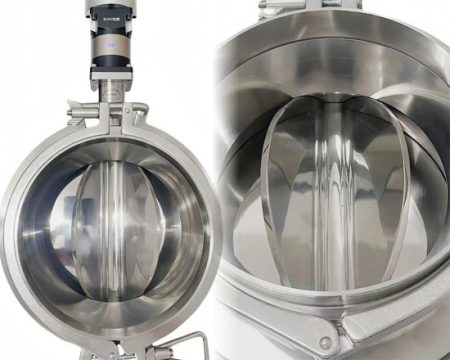
What is the main difference between butterfly, rotary, and knife gate valves?
Butterfly valves use a disc that turns to control flow. Rotary valves have a spinning part that moves and measures powder. Knife gate valves use a sharp blade to cut and stop powder. Each valve works best for certain powder jobs.
How does powder type affect valve selection?
The size, roughness, and how powder moves help pick the valve. Powders that flow easily work well with butterfly or rotary valves. Sticky or rough powders need knife gate or strong rotary valves. Using the right valve material helps the valve last longer.
Can these valves handle food or pharmaceutical powders safely?
Yes. Some valves are made for food and medicine jobs. They have smooth parts and safe materials. These valves are easy to clean and help stop germs. Food and medicine factories often use clean butterfly or rotary valves.
How often should powder valves be maintained?
How often you check valves depends on the powder and how much you use them. Rough powders mean you need to check more often. Most places look at and clean valves when they stop work for repairs. Checking valves often stops leaks and clogs.
Are these valves suitable for high-pressure systems?
Rotary and knife gate valves can take some pressure. Butterfly valves work best with low pressure. For high pressure, you need stronger valves or other types. Always look at what the maker says about pressure.
What are common signs a powder valve needs replacement?
Some signs are:
- Leaks near the seals
- Hard to open or close
- Parts look worn or rusty
- Powder does not flow right
Tip: Change valves quickly to stop problems and keep powder safe.
Can one system use multiple valve types?
Yes. Many big powder systems use more than one valve type. Each valve does a different job, like stopping, measuring, or moving powder. Using different valves helps the system work better and do more things.
